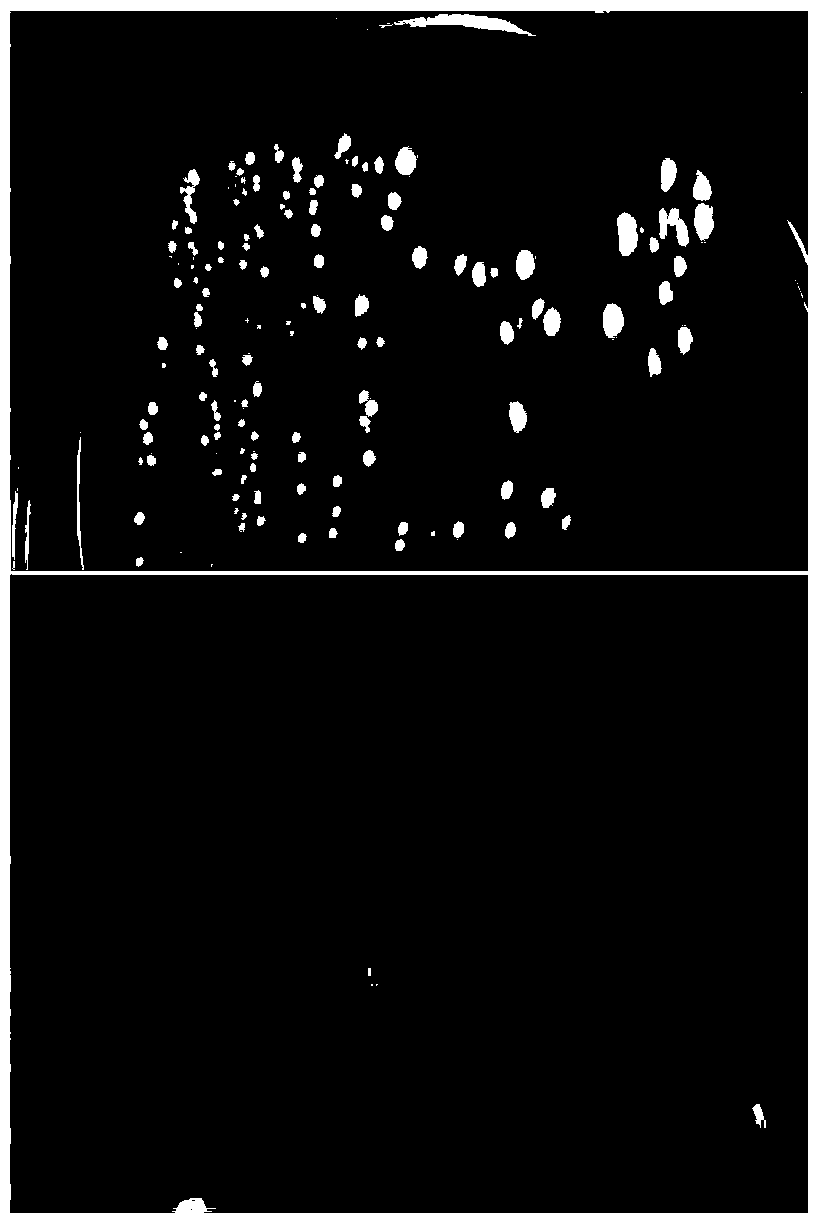Low-temperature yeast for brewing musalais, preparation method and prepared musalais
A technology of Saccharomyces cerevisiae and low temperature, applied in the preparation of wine, preparation of alcoholic beverages, and methods based on microorganisms, etc., can solve the problem of lack of suitable excellent strains and their supporting brewing processes, and achieve good tolerance and fermentation performance. Good, even haze effect
- Summary
- Abstract
- Description
- Claims
- Application Information
AI Technical Summary
Problems solved by technology
Method used
Image
Examples
Embodiment 1
[0042] Example 1: Screening, isolation, purification and identification of strains
[0043] Strain Isolation Method
[0044]1. Collection of yeast isolation sources: 49 samples were collected from 8 workshops and factories with typical musalais brewing techniques in southern Xinjiang from September to October 2010. Samples included freshly pressed must with or without pomace, must in the process of cooking, 0d (initial broth, i.e. cooled grape juice) fermentation broth, and juices from different sizes (50 -500 L) porcelain altar or stainless steel fermenter (20 t) in different periods of fermentation broth. Use the manufacturer's special scooping tool for sampling to take out the sample solution and immediately put it into a plastic bottle (rinse the sample solution 3 times) and then use a syringe that has been rinsed (rinse the sample solution 3 times) to suck 10mL of the sample solution to the sterilized stopper 20 mL small glass vial, cover the cork and seal it with a...
Embodiment 2
[0075] Embodiment two: excellent bacterial strain screening experiment
[0076] The 436 strains of Saccharomyces cerevisiae and 5 strains of commercial Saccharomyces cerevisiae numbered LTSM-A1, which were screened, isolated and initially identified, were tested and analyzed for basic fermentation characteristics, including analysis of different temperatures, sugar content, alcohol content and low nitrogen tolerance, fermentation Determination of alcohol production, flocculation, autolysis, H production 2 The detection of S ability, the detection of biogenic amine characteristics, the determination of pectinase activity and the determination of β-glucosidase activity are as follows:
[0077] 1. Test and analysis of basic fermentation characteristics of isolates
[0078] (1) Analysis of different temperature, sugar content, alcohol content and low nitrogen tolerance: 436 strains of Saccharomyces cerevisiae identified including LTSM-A1 and 5 commercial Saccharomyces cerevisia...
Embodiment 3
[0108] Embodiment three: Utilize low temperature Saccharomyces cerevisiae ( Saccharomyces cerevisiae ) LTSM-A1 CGMCC No.7512 low temperature fermentation process to prepare musalaisi
[0109] The 5 screened strains and cy3079 commercial bacteria (control) were carried out in a 25L pilot-scale fermentation test in Xinjiang Awati Daolang Musalaisi Factory and Xinjiang Wuzihao Musalaisi Private Ancient Workshop to simulate the growth of Musalaisi yeast The growth environment, using natural fermentation without inoculation as a control, explores the influence of these yeasts on the quality of musalaisi under traditional brewing technology and modern brewing technology, in order to screen out excellent strains suitable for different brewing processes.
[0110] 1. The low-temperature fermentation process and operation are as follows:
[0111] (1) Preparation of distiller's yeast: Saccharomyces cerevisiae ( Saccharomyces cerevisiae ) The fresh culture of LTSM-A1 CGMCC No.7512 on ...
PUM
 Login to View More
Login to View More Abstract
Description
Claims
Application Information
 Login to View More
Login to View More - R&D
- Intellectual Property
- Life Sciences
- Materials
- Tech Scout
- Unparalleled Data Quality
- Higher Quality Content
- 60% Fewer Hallucinations
Browse by: Latest US Patents, China's latest patents, Technical Efficacy Thesaurus, Application Domain, Technology Topic, Popular Technical Reports.
© 2025 PatSnap. All rights reserved.Legal|Privacy policy|Modern Slavery Act Transparency Statement|Sitemap|About US| Contact US: help@patsnap.com



